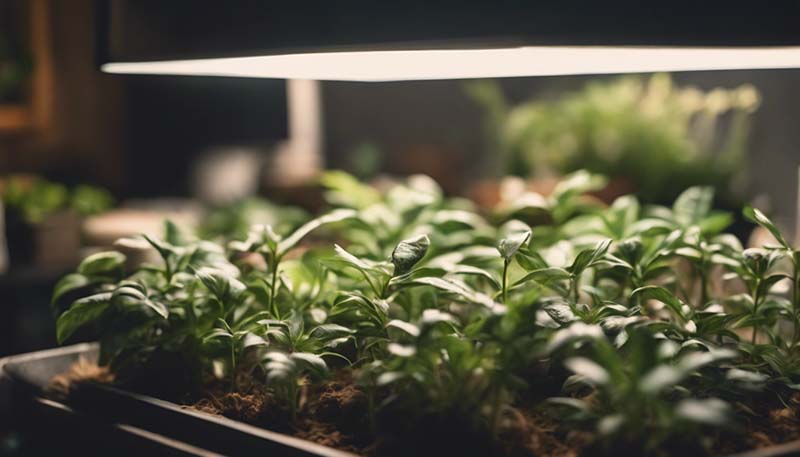The Importance of Light in Indoor Gardening
Gardening is a rewarding and therapeutic activity that allows you to connect with nature, improve your mental well-being, and even provide fresh produce for your kitchen. However, when you don't have access to outdoor space, indoor gardening becomes an ideal alternative. One of the most crucial elements in indoor gardening is light, which is essential for the growth and health of your plants. In this article, we will explore the importance of light in indoor gardening, the different types of light sources, and how to optimize lighting conditions for your indoor plants.
Why is Light Important for Indoor Plants?
Light is the primary energy source for plants, as it is required for the process of photosynthesis. During photosynthesis, plants convert light energy into chemical energy, which is then used for growth, reproduction, and other vital functions. Without adequate light, indoor plants may experience stunted growth, weak stems, and reduced flowering or fruit production. Furthermore, insufficient lighting can lead to a phenomenon called etiolation, where plants become leggy and stretch towards the light source in search of energy.
Advertisement
Photosynthesis and Light Spectrum
Photosynthesis is influenced by the light spectrum, which is the range of light wavelengths that plants can use for this process. The visible light spectrum, which is the light we can see, includes the colors red, orange, yellow, green, blue, indigo, and violet. While all these colors are important, plants primarily use the red and blue wavelengths for photosynthesis. Green light is reflected, which is why plants appear green to our eyes.
Types of Light Sources for Indoor Gardening
There are several types of light sources available for indoor gardening, each with its own advantages and disadvantages. Here's a brief overview of some common lighting options:
1. Sunlight
Natural sunlight is the most ideal light source for plants, as it provides a full spectrum of light wavelengths. However, not all indoor spaces receive sufficient sunlight, especially during winter months or in areas with limited windows. If you have access to a sunny window, consider placing your plants there to maximize their exposure to natural light.
2. Compact Fluorescent Lights (CFLs)
CFLs are energy-efficient bulbs that produce a warm, white light. They are relatively inexpensive and suitable for small indoor gardens or as supplemental lighting for larger setups. However, CFLs may not provide the full spectrum of light needed for optimal plant growth.
3. Light Emitting Diodes (LEDs)
LED grow lights are becoming increasingly popular in indoor gardening due to their energy efficiency, long lifespan, and ability to provide a full spectrum of light. LEDs can be customized to deliver specific wavelengths of light, allowing you to tailor the lighting conditions to the needs of your plants. They are also available in various colors, which can be used to manipulate plant growth and flowering.

4. High-Intensity Discharge (HID) Lights
HID lights, such as metal halide (MH) and high-pressure sodium (HPS) bulbs, are powerful and provide a high light output. MH bulbs emit a blue light that promotes vegetative growth, while HPS bulbs emit a red light that encourages flowering and fruiting. HID lights are suitable for larger indoor gardens or for plants with high light requirements.
Optimizing Lighting Conditions for Indoor Plants
Optimizing lighting conditions is crucial for the success of your indoor garden. Here are some tips to help you create the best possible environment for your plants:
1. Assess Your Space and Plant Needs
Before choosing a light source, consider the size of your indoor garden, the types of plants you are growing, and their specific light requirements. Some plants, like succulents and cacti, require less light than leafy greens or flowering plants.
2. Provide Adequate Light Intensity
Ensure that your plants receive enough light intensity to support their growth. The light intensity required varies depending on the plant species and its stage of growth. Generally, seedlings and young plants require lower light intensity, while mature plants and those in the flowering stage need more light.
3. Maintain Proper Distance Between Lights and Plants
The distance between the light source and your plants is crucial to prevent light burn or insufficient lighting. As a general rule, the closer the light source is to the plants, the more intense the light. Adjust the height of your lights based on the type of light source and the specific needs of your plants. For example, LED lights can be placed closer to the plants than CFLs or HID lights.
4. Use a Timer for Consistent Light Exposure
Consistency is key when it comes to providing light to your indoor plants. Use a timer to ensure that your plants receive the same amount of light each day. Most plants require between 12 to 16 hours of light per day, depending on their specific needs.
5. Monitor and Adjust as Needed
Regularly monitor your plants for signs of stress or insufficient lighting, such as yellowing leaves, leggy growth, or reduced flowering. Adjust your lighting setup as needed to provide the optimal environment for your indoor garden.
Conclusion
Light is a critical component of indoor gardening, as it directly impacts the growth, health, and productivity of your plants. By understanding the importance of light, choosing the right light source, and optimizing your indoor lighting conditions, you can create a thriving indoor garden that brings you joy and satisfaction all year round.
Comment